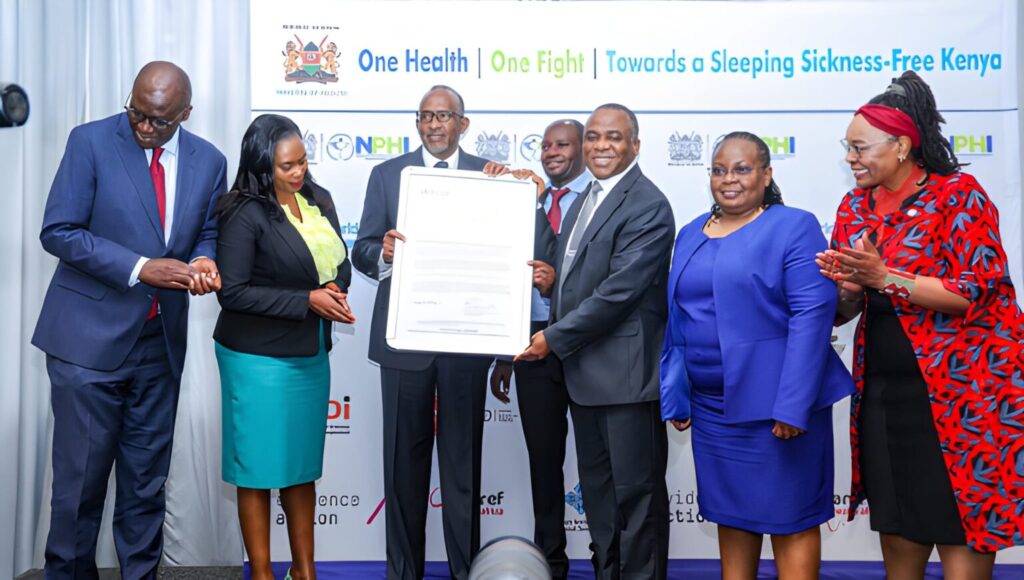Kenya has officially been certified free of Human African Trypanosomiasis (HAT), commonly known as sleeping sickness, marking a significant milestone in public health. The World Health Organization has validated the country’s achievement after confirming there have been no indigenous cases reported since 2009.
This success is the result of years of coordinated action, combining strong policy direction, scientific innovation, community participation, and sustained disease surveillance. The Ministry of Health has integrated HAT services into primary health care, ensuring that surveillance and early detection remain key priorities.
The certification ceremony, held under the theme “One Health One Fight Towards a Sleeping Sickness-Free Kenya,” celebrated the combined efforts of health workers, technical teams, community members, and partner organizations. Authorities reaffirmed their commitment to maintaining robust surveillance systems, early response capabilities, and community engagement to prevent a resurgence.
Kenya’s journey in tackling sleeping sickness began in the early 20th century, when the first cases were reported. Since then, sustained control measures have dramatically reduced transmission. The last locally acquired case was detected in 2009, while the last two imported cases linked to infections from the Masai Mara were reported in 2012.
To ensure continued protection, Kenya has reinforced surveillance in 12 health facilities across six historically affected counties, designating them as sentinel sites. These facilities are now equipped with modern diagnostic tools, and health personnel have received specialized training to detect and confirm cases using the most sensitive and practical tests for the disease.
The post-validation phase will focus on preventing reintroduction or undetected transmission. A comprehensive surveillance plan will be implemented, including community awareness campaigns, routine health worker training, and rapid response mechanisms. Additionally, a stockpile of medicines will be maintained to enable swift treatment should any future cases occur.
This achievement aligns with Kenya’s broader Emergency Preparedness and Response agenda, supported by the establishment of the National Public Health Institute. The institute plays a central role in coordinating disease surveillance, research, and outbreak response across the country.
The elimination of sleeping sickness as a public health problem in Kenya is not only a victory for national health authorities but also a demonstration of the power of partnerships, innovation, and community involvement. The focus now shifts to sustaining these gains, ensuring that the disease remains eliminated, and serving as a model for other nations working towards similar goals.

